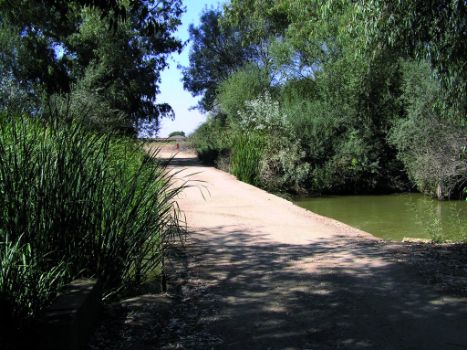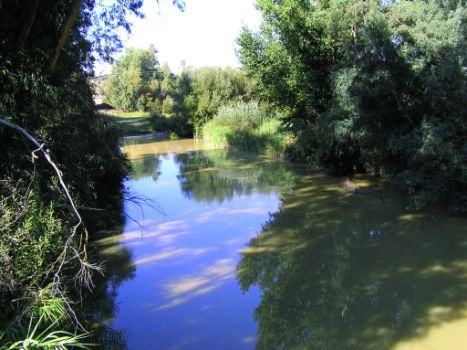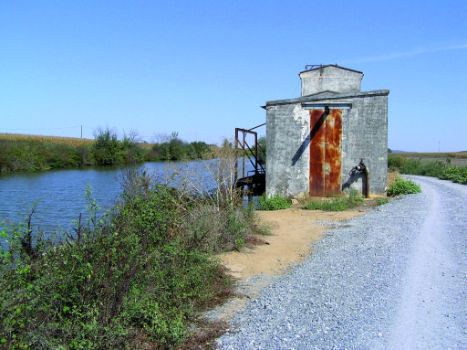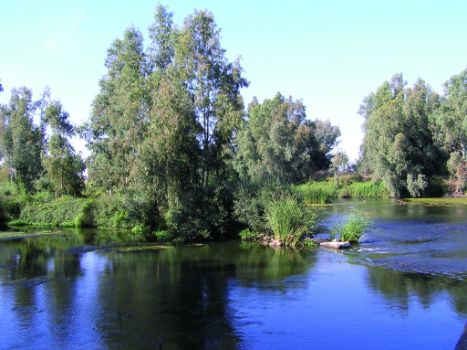Net of Natural
Trails

Stage 29: Valdetorres - Valverde de Mérida
Description
From croplands to holm oak dehesas
This Stage traverses through a large variety of landscapes, including beautiful Mediterranean and riparian forests well worth a visit, if only for their enormous ecological importance as biodiversity reserves. As it initially ventures through the upper flood plains of the Guadiana, it runs amidst irrigated fields of rice and corn and holm oak dehesas.

The Stage begins at Valdetorres. The route starts along the stretch shared with the previous Stage until it reaches an intersection where the road to Valdetorres starts (refer to Stage 28). It therefore runs along the last stretch of Stage 28, but in the opposite direction: bridge on the River Guadámez, bathing and rest area, path close to the BA-142 and irrigated land until the intersection, where it turns left and this Stage continues.
The Trail traverses through the irrigated fields of the upper flood plains of the Guadiana. Most of the route runs through the “Río Guadiana Alto- Zújar” Site of Community Importance (SCI).
The Stage crosses the BA-142, properly signposted, and continues along a dirt road through the River Guadiana Gorge with a catch-and-release fishing zone that abounds with Iberian nase (Chondrostoma polylepis), carp (Cyprinus carpio), common Iberian barbel (Luciobarbus bocagei) and pike (Esox lucius), as well as other species such as the red swamp crayfish (Procambarus clarkii). The riparian scrubland is populated with (Nerium oleander), Ibero-African shrubby spurge (Flueggea tinctoria) and African Tamarix (Tamarix africana).

Birds are the most important wildlife in the area. The dominant bird species in the mountains are Golden Eagle (Aquila chrysaetos), Bonelli's Eagle (Hieraaetus fasciatus), Osprey (Pandion haliaetus), Griffon Vulture (Gyps fulvus), Egyptian Vulture (Neophron percnopterus), Eurasian Crag Martin (Ptyonoprogne rupestris), Blue Rock Thrush (Monticola solitarius) and Lesser Kestrel (Falco naumanni).
The route turns sharply south toward the Guadámez. It crosses the bridge on the river, and then traverses through irrigated fields dotted with water pump houses and some interesting derelict agricultural buildings of vernacular architecture.
From here, until the detour to Valverde de Mérida or Zarza, the route primarily skirts around San Julián Gorge. There are few buildings along this route, except water pumps for irrigation.

This region treasures unique natural values. On the one hand, there are still a few pockets of beautiful dehesas, Mediterranean and riparian forests. These sites have enormous ecological importance as biodiversity reserves in an area drastically affected by human activity.
The route heads towards the EX-307, which merges onto the A-5 motorway at Guareña. There is a rest area on the banks of the River Guadiana, which were being refurbished at the time of writing.
The stretch shared by Sections 29 and 30, to and from Valverde de Mérida, also begins in this area. Those who wish to continue to Stage 30 without entering Valverde must take the road towards La Zarza.
Those who prefer to finish Stage 29, and enjoy a well-deserved rest at Valverde de Mérida, must continue along the former EX-307 for about 70 metres, and cross the old bridge on the River Guadiana. As the Trail sign indicate, this bridge may be flooded in the rainy season. The route crosses the EX-307 again, continues parallel to the river, and then skirts around Bambento Hill, traversing through a holm oak forest, until it reaches Valverde de Mérida.
Sites of interest
Profile
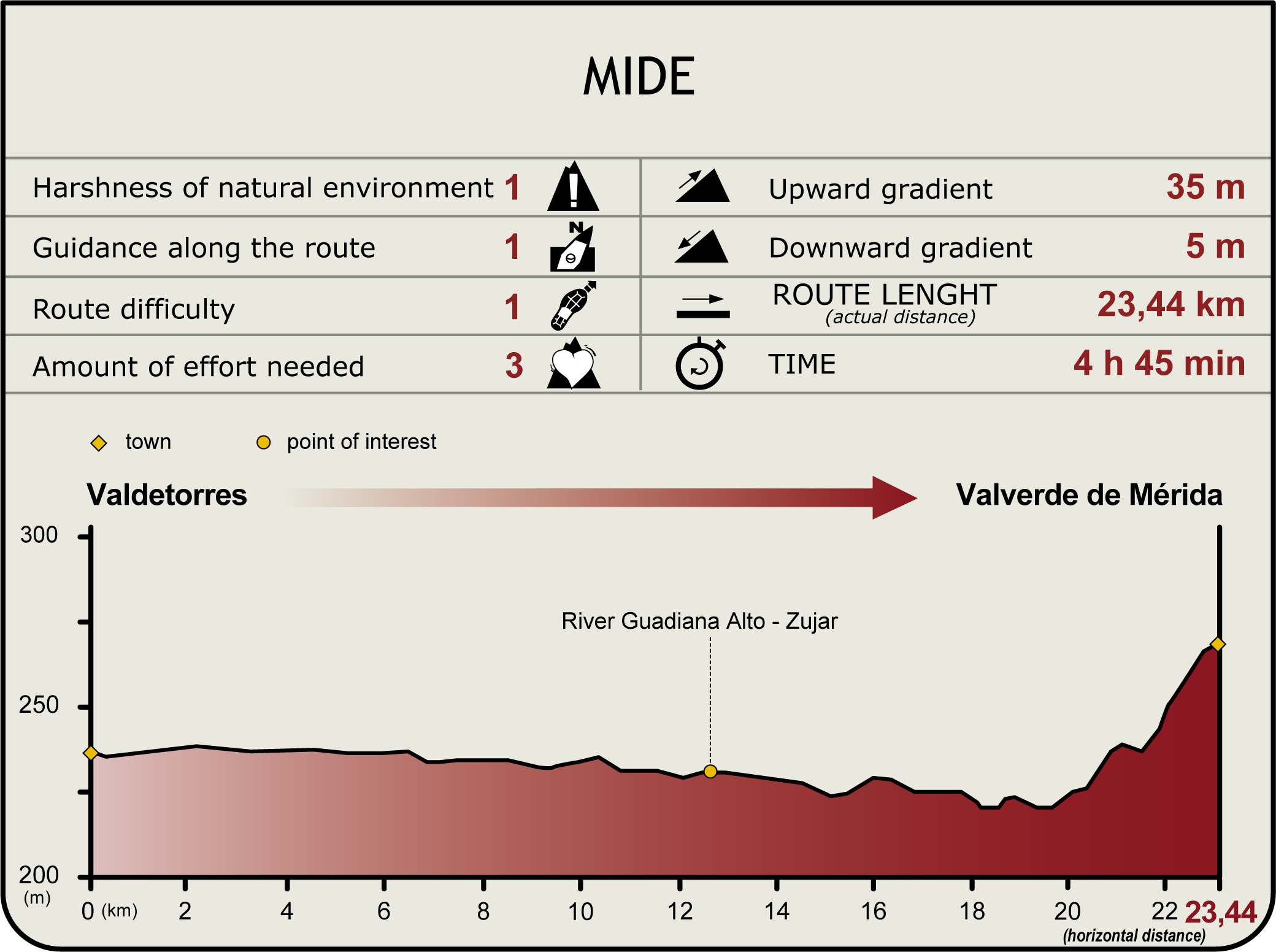
Highlights
Further information
The kingfisher
The kingfisher (Alcedo atthis), one of the most emblematic bird species of our rivers, deserves a special mention. They are usually found in the river groves and banks of the Guadiana, where they nest in sandy embankments.
Brightly coloured in turquoise and orange, they perch on willow branches waiting to catch their prey. It feeds on young and small fish, diving from the tree with admirable precision.
Woodchat Shrike
Brambles grow wild in neglected land near the river. The dominant species in this habitat are elmleaf blackberry (Rubus ulmifolius)and, to a lesser extent, wild rose (Rosa sp.) and hawthorn (Crataegus monogyna).
The most common riparian undergrowth found near willow and ash groves are brambles, which usually avoid waterlogged areas.
This habitat also plays host to the Woodchat Shrike (Lanius senator), a bird with an interesting behaviour. This little bird impales its prey on the thorns of the plants to feed on them. The shrike's unsavoury habit is justified by its physical limitations, whose legs are not strong enough to hold the prey while feeding.



